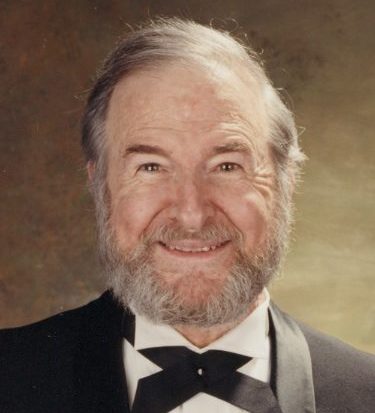
By George B. Kauffman and Kenneth Owen (“K.O”) Crosby

Since its inception, water fluoridation has been the subject of controversy. However, with the currently unstable and unfortunate political, social and employment situation and its concurrent loss of faith in government, attacks on the procedure by right-wing extremists have snowballed with a vengeance. On her Oct. 13 MSNBC show, Rachel Maddow reported that the “tea party” has successfully legislated the end to fluoridation of Florida’s Pinellas County water supply by Dec. 31. They have resurrected the right-wing paranoiac conviction that the government is using fluoridation to “dumb down” the people so they can be more easily controlled by “globalists.”
Faced with money worries caused by the recession squeezing budgets and a growing distrust of government, the issue of water fluoridation, which has remained on the fringes for decades, is shifting away from conspiracy and toward the mainstream. When people feel threatened, upset and scared, they are prone to make unwise decisions, and persons and organizations with their own agendas are taking advantage of this situation.
Even though the federal government and health officials continue their full support of this measure that provides a 25% reduction in tooth decay nationwide, a growing number of communities are deciding to stop water fluoridation, a move that will adversely affect the poor, who cannot afford dental care. According to Kenneth T. Welch, a Pinellas County commissioner, who voted to continue water fluoridation, “Political rhetoric won over science and the best advice of our medical and dental community” (Alvarez, L., “Looking to Save Money, More Places Decide to Stop Fluoridating Water,” New York Times, Oct. 13, 2011).
The controlled addition of fluoride—as sodium fluoride, fluorosilicic acid or sodium fluorosilicate—to the public water supply prevents tooth decay (dental caries), a major health concern and one of the most prevalent diseases worldwide. The fourth most expensive disease to treat, it afflicts 60%–90% of schoolchildren and the vast majority of adults in most industrialized countries, especially the poor. The safety and effectiveness of water fluoridation is endorsed by health and dental societies worldwide. Other methods of fluoride therapy include fluoridation of toothpaste, salt and milk. The motivation is similar to the addition of iodide to salt to prevent mental retardation and goiter.
According to the World Health Organization (WHO), a level of 0.5 to 1.0 milligrams (mg) per liter (l) or parts per million of water, depending on the climate (in hotter regions people drink more water), is most effective. In January 2011, the U.S. Department of Health and Human Services recommended reducing the concentration to 0.7 mg/l. Removal of fluoride is needed when the naturally occurring level exceeds the recommended limit. Fluoridation can cause fluorosis, which can alter the appearance of developing teeth, but this is mild and not considered to be of aesthetic or health concern. In the United States, water fluoridation costs about $0.95 per person annually.
Fluoride is a natural element found in the groundwater in many places. Adding fluoride to drinking water is adjusting the level to what has been found to be optimal for dental health. It has been estimated that fluoridation has saved $40 billion in expenses that would have been used to treat dental disease. Imagine all the human suffering that has been prevented. Dental disease is one of the most common diseases in the world and it is completely preventable.
There are no annual epidemics of decay, nobody catches the “Hong Kong decay” and there is no virus for which we can receive a vaccination that will prevent decay. Acid causes decay. Bacteria like Streptococcus mutans and Lactobacillus species convert carbohydrates like sugar to acid and a gluey plaque that adheres to the tooth. Fluoride in the enamel (largely hydroxyapatite) makes the tooth more resistant to acid. The choices are clear. We can stop eating, we can keep all the germs off our teeth or we can make our teeth more resistant to acid. Most of us are not too good at the first two options, and fluoridation from childhood on has a proven track record of effectiveness for a very low cost and a great benefit to the whole population.
During the 1960s, dentists routinely took X-rays at every six-month checkup. So effective was fluoridation that this is no longer necessary. When co-author Crosby attended dental school (graduating in 1985), he had classmates who could not find work as dentists so they worked as dental hygienists. In response to the decreasing demand for dental care during the last two decades, 10 U.S. dental schools have closed, and most have dramatically reduced their class sizes. His UC San Francisco class numbered 108 students; the current class has 75 students.
Although systemic water fluoridation, in which fluoride is ingested, is the most cost-effective method for reducing cavities, topical therapy is also available. However, the various topical fluorides (e.g., toothpastes, mouthwashes, gels, varnishes and fluoridation of salt or milk) reinforce the smooth surfaces of teeth but have little effect on the fissures and grooves. Preventive dentistry treats the grooves by filling them in with a watery resin that is then hardened in the depths of the grooves. As long as it remains, a tooth will never get a cavity there. Systemic fluoride has its greatest benefit by going into the enamel as it is being assembled in the developing tooth. This is then a lifetime benefit of having teeth that are more resistant to acid attacks, not just a benefit for children.
In 1901 in Naples, Italy, surgeon John Eager of the U.S. Marine Hospital Service observed that otherwise healthy people had mottled, stained, brown teeth, which he assumed was caused by the local drinking water. That same year, Frederick McKay, a Colorado Springs dentist, became fascinated by what he called “Colorado stain” (now called dental fluorosis), which he linked to a variable in drinking water, which he eventually identified as fluoride. By 1928, he noticed that mottled teeth had fewer cavities. During the 1930s and 1940s, H. Trendley Dean of the U.S. National Institutes of Health published epidemiological studies suggesting that fluoride concentrations of about 1 mg/l was associated with substantially fewer cavities.
To test his hypothesis, beginning on Jan. 25, 1945, Dean and colleagues fluoridated the water in Grand Rapids, Mich. By the trial’s conclusion in 1959, a 55.5% reduction in cavities per child was found. In 1951, fluoridation became an official policy of the Public Health Service, and by 1960 it had become widely used in the United States, reaching about 50 million people. It was widely accepted largely because of glowing endorsements by the American Dental Association and the Centers for Disease Control; the CDC called it “one of the 10 greatest public health victories of the 20th century.”
Some persons viewed fluoridation as government overreach and, unfortunately, it began simultaneously with the rise of cold war paranoia. It became a favorite target of right-wing anti-communist fervor and groups like the John Birch Society. Conspiracy theories included claims that it was motivated to protect the U.S. atomic bomb program from litigation; that it was pioneered by German chemical companies to render people submissive to those in power; that it was promoted by the sugary food, phosphate or aluminum industries; or that it was a smokescreen to conceal the failure to provide dental care for the poor.
Perhaps most famously of all, fluoridation was parodied in Stanley Kubrick’s 1964 award-winning antiwar satirical movie, Dr. Strangelove, as part of a communist or New World Order plot to take over the world. Persons of our generation still vividly recall the cigar-chomping and gun-toting Sterling Hayden’s “purity of essence” paranoia, George C. Scott’s gum-chewing general or Slim Pickens’ wild ride on the bomb. Through the years, the specific anti-fluoridation arguments have changed to match the spirit of the time.
Although opposition to water fluoridation has been based on ethical, legal, safety and efficacy grounds, the issue has passed from the realm of reasoned discourse to that of ideology. Scientifically, the debate, dubbed “America’s longest-running political melodrama,” has always been one-sided, with an overwhelming majority of dentists and physicians supporting it but with a significant but vocal minority of critics opposing it.
Instead of focusing on benefits versus risk, the controversy is hyper-polarized with neither side, relatively small pro or con lobbies, willing to accept results that do not wholly support its position. What is needed is better public understanding of the role and limits of science and how ethical issues can be bound up with scientific findings. Considering today’s toxic political atmosphere, don’t hold your breath!
Our society often chooses to spend a little money on prevention by treating everyone even though we do not know which one of our children may have caught polio or smallpox. We even tax ourselves to pay for the medical treatment of folks who drink, smoke and eat their health away while the responsible ones among us work hard to live healthy and work hard to pay these taxes. Co-author Crosby sees people every day in pain or with damaged teeth and wonders how many of them could have been spared the pain and expense if all of Fresno had fluoride in its water (Figure 2).
*****
George B. Kauffman, Ph.D., chemistry professor emeritus at California State University, Fresno, and Guggenheim Fellow, is recipient of the American Chemical Society’s George C. Pimentel Award in Chemical Education, the Helen M. Free Award for Public Outreach and the Award for Research at an Undergraduate Institution. This year, he was elected an ACS Fellow.
Kenneth Owen (“K.O.”) Crosby, D.D.S., one of Dr. Kauffman’s former students and the Kauffman family dentist, earned his B.A. from California State University, Fresno, and his D.D.S. from the University of California, San Francisco. A past president of the Fresno Madera Dental Society and chairman of the organization’s Ethics Committee, he has participated in international dental missions to Nepal, Mexico and Albania, as well as medical/dental missions with Christian medical dental associations to underserved Central Valley towns like Del Rey, Mendota, Parlier, Cutler, Ivanhoe and Corcoran.
